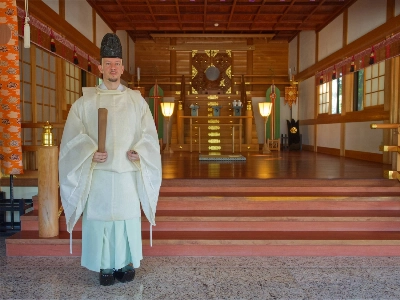* Japanese name: Gengorou
* Scientific name: Cybister japonicus
* Description: This is a large, streamlined water beetle, highly adapted to an aquatic life. It is a powerful swimmer, with hind legs flattened like oars and fringed with long hairs. The body is green or black, with yellow-white bands running down the sides from the head. 35-40 mm long.
* Where to find them: In rivers, streams, lakes and ponds from Hokkaido to Okinawa. Adults can be found from April to October. Females make small holes in aquatic plants with their jaws and insert eggs into the plant, where they will be safe from harm.
* Food: Voracious predators, diving beetles will devour the larvae of other insects as well as small fish, shrimp, newts, tadpoles and frogs. The beetle larvae are equally aggressive, stabbing prey with specially adapted mouthparts. There is a narrow canal inside the mandibles, through which the larva injects digestive juices into the prey, which it then sucks dry. Diving beetles sometimes overeat and become too heavy to swim. In this case, they quickly excrete some food. If that still doesn't work, they vomit what they've just eaten.
* Special features: Like many insects in Japan, diving beetles used to be eaten, apparently for perceived medicinal benefits. These days, however, pollution from agricultural chemicals that seep into rivers means that the diving beetle is off the menu. Many species of diving beetle have immensely long sperm (longer than the beetle's body length), stored inside the body in coils like spaghetti. The reason for this extravagant length is unknown -- the female might digest the sperm and use the energy to make more eggs, or the male might be protecting his paternity (long sperm are probably hard to dislodge once they are inside the female). Either way, the information is unlikely to whet human appetite for the beetle.
5 mins ago



















With your current subscription plan you can comment on stories. However, before writing your first comment, please create a display name in the Profile section of your subscriber account page.